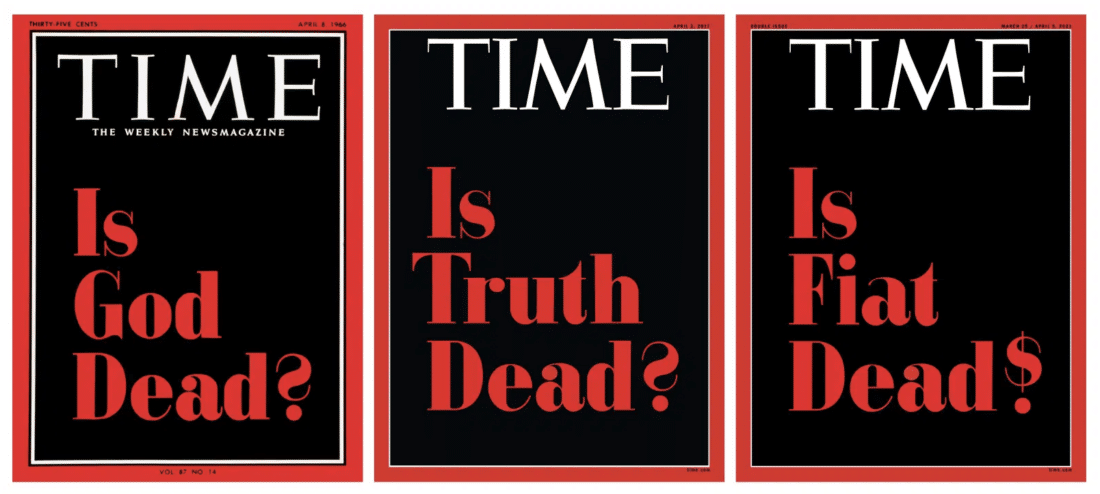This is the final installment in a series of articles concerning the intersection of blockchain and WordPress. (You can check out the first article here, the second article here and the third article here.)
In Part I of Blockchain Tech Trends (available here), I looked at how two blockchain-specific trends—digital wallets and DeFi— will impact the WordPress community. Here, I’ll review two more top industry trends which will also likely disrupt WordPress: Non Fungible Tokens (NFTs) and Web3 Tech.
NFTs: The Token Currency

NFT stands for non-fungible token. The idea is simple. Let’s use normal currency coins as an example. Most 50p coins (UK currency, or about half a dollar) are worth, well, 50p. But some are different. They have rare patterns that make them sought after by a collector and can sell for anything up to 1400x the face value. In this example, we can say that most 50ps are ‘fungible’; it doesn’t matter which you use, they’re the same for all intents and purposes. But a rare coin is ‘non fungible’; it’s not the same. NFTs take this concept into the digital realm.
The vast majority of the story of digital is about abundance. The ability to copy and paste is an incredible concept but also one that’s been a major challenge for businesses like the music industry that previously relied on controlling scarce resources. NFTs bring about a concept of digital scarcity—that there may only be a provably single instance of something.
So what new things have NFTs brought to the world in general? The biggest headlines have been in the art world. The digital artist Beeple’s $69M sale is the third largest by a living artist ever! In a somewhat extreme example of ‘digital scarcity,’ someone even burned a Banksy to generate an NFT.
The Meme-ability Factor
If we can expand our definition of art, we suddenly include the whole notion of ‘digital collectibles.’ In many ways, this is merely just the latest instantiation of a seemingly innate human trait to collect ‘shiny things.’ When I was a lad, it was stickers and sticker books (with some far more rare than others and in high demand), through Pokemon, Yu-Gi-Oh! and Magic: The Gathering cards.
The first NFT collectibles that took public imagination were CryptoKitties around 2017. This project had a few characteristics which have turned out to be common to the trajectory of many NFT projects:
- Cuteness/meme-ability
- A spectrum of value: some are accessibly priced, others are outrageous
- Interactivity: the kitties can breed to sire new kitties which the owner of the kitties can then sell
Indeed the project proved so popular that it essentially killed the Ethereum network due to the volume of transactions.
WordPress Collectibles

As a kind of segue towards how this might be relevant for WordPress, I’d like to call out the promise of NFTs within computer gaming; for example, as a mechanism for folks to be able to take valuable skins or in-game assets out into the digital realm beyond the game either to use in a different game, lend or rent to others, or ultimately perhaps into a Ready Player One-style metaverse.
Is there a market for premium designer WordPress theme NFTs? For instance, would you pay top dollar for a Kanye-designed theme that no one else can have?
Another emerging use case for NFTs is the idea of using them as certificates of authenticity or warranties for goods. In other words, could NFT-based licenses for plugins and themes be used in lieu of a license key? One last, compelling trend in NFTs is the idea of content NFTs. Huge publications like Time, NY Times and Quartz are already experimenting in the space with rare covers.
It’s a pretty novel idea, a combination of a collectible (you might want to hang the cover on the wall of your Decentraland house), patronage and community engagement, and ownership. I can imagine future iterations of this trend where folks can buy the NFT of an article or issue and receive a yield based on the revenue generated by ads or micropayments on that page. Certainly, WordProof is potentially well placed to help here as the timestamps they generate for content are already a step down this path.
Web3 Decentralized
What is Web3? Web3 is described as the ‘decentralized web.’ Its vision is for a web where users all choose platforms that they can trust and yet are not controlled by any single party. The author’s personal belief is that Web3 will also need to account for other strong emerging tech trends like AI and AR/VR/3D. For the sake of this article, let’s focus on the decentralization aspect.
In today’s web, much of people’s time is spent using platforms owned by corporations that are growing increasingly powerful as a result. Much good has come from the innovations in Web2 but the problems inherent within this model are also becoming clear. Harvesting of personal data, increasingly sophisticated manipulation of populations by using that data, opaque policies, and enforcement around bad behavior, to name a few.
Web3 takes the same ideas behind Bitcoin and Ethereum—that it is possible to trust without having to trust a centralized party—and applies those to the web.
Part of the Cambrian Explosion of blockchain projects has been people reimagining how to replace parts of the existing web with decentralized equivalents. Some seem more promising than others.
1. File transfers
The first decentralized web protocol I can think of was BitTorrent. It allows peer-to-peer transfer of files and data as a solution to enabling piracy. Through this decentralization, it avoided the fates of Napster and other centralized file sharing services and has proved incredibly resilient. While BitTorrent and piracy are forever linked, there are many perfectly legitimate uses and users of BitTorrent. Perhaps somewhat inevitably, a crypto billionaire bought BitTorrent and integrated it into their cryptocurrency project. It’s interesting that the protocol ran for roughly 20 years without any concept of a token or currency to support it.
2. Storage
Decentralized storage seems like promising technology. IPFS (InterPlanetary File System) is the best established of these protocols and allows users to store files in a decentralized manner. It allows anyone in the network to be both a client and a server. This isn’t just a niche crypto project; Cloudflare has an IPFS gateway.
Other crypto projects like Filecoin and Elastos build on IPFS but add their own cryptoeconomics. Typically, NFTs store the underlying digital asset on IPFS.
The Key Identity
If we remember that Web3 is all about not having to trust centralized parties, identity is critical to this vision. Where do we sign in if we want to avoid trusting a centralized service?
Again, we can take inspiration from Bitcoin. To own a wallet in Bitcoin is to have the private key to that wallet. That’s it. You have the key, you control the wallet. No account to recover, nowhere to sign in. Either you have the cryptographic key or you don’t. This puts full responsibility back on the individual both to keep the key and to protect it from others.
This paradigm isn’t for everyone. Those of us who currently struggle to manage passwords effectively may not want to take on the responsibility of full and final ownership of their bank account access.
But for many the idea of verifying identity with a private key or wallet is attractive. Balaji Srinivasan, former CTO of Coinvoice, makes a good argument as to why pseudonymity online is a powerful idea that can help connect and protect participants in a global economy.
For many crypto projects, connecting with a wallet is the only way of proving your identity, and it works well. Using a browser add-on like MetaMask, I can become ‘signed in’ and give the site access to whatever aspects of my digital wallets I’d like; for example, view my NFTs, send or receive funds, or cryptographically sign messages.
Web3 and WordPress
Some of the Web3 ideas are immediately applicable to WordPress. There are plugins for IPFS and for connecting ETH wallets, along with various payment gateways that allow sites to accept Bitcoin and other cryptocurrencies without a centralized service. In fact, at the time of writing this article, there are more than 40 plugins tagged ‘cryptocurrency’ on wordpress.org. Companies like WordProof are building businesses around this intersection of Webs 2 and 3.
But I can’t help thinking that there are more disruptive impacts ahead for WordPress and Web3. With WordPress now running over 40% of the web, is there in fact an argument that decentralization is attractive to avoid a single point of failure? Should WordPress updates be available via BitTorrent and hosted on IPFS? Should we allow people to login to wordpress.org using private keys to help protect identities in case of a data breach?
Conclusion
There are lots of questions to ask and consider before we even start thinking about answering them. The temptation is to say ‘crypto and blockchain are all so new and unknown’ and to kick the ball down the road. But Bitcoin is only six years younger than WordPress itself. I think it’s time for the WordPress community to take the challenge of Web3 disruption seriously—and to lead the charge ourselves.
Feature image by Pascal Bernardon on Unsplash





Join the conversation